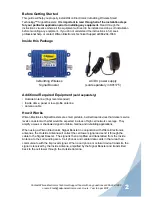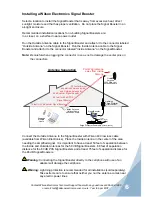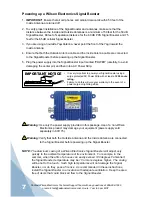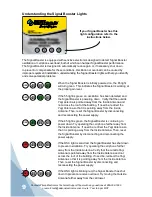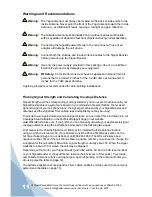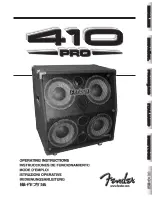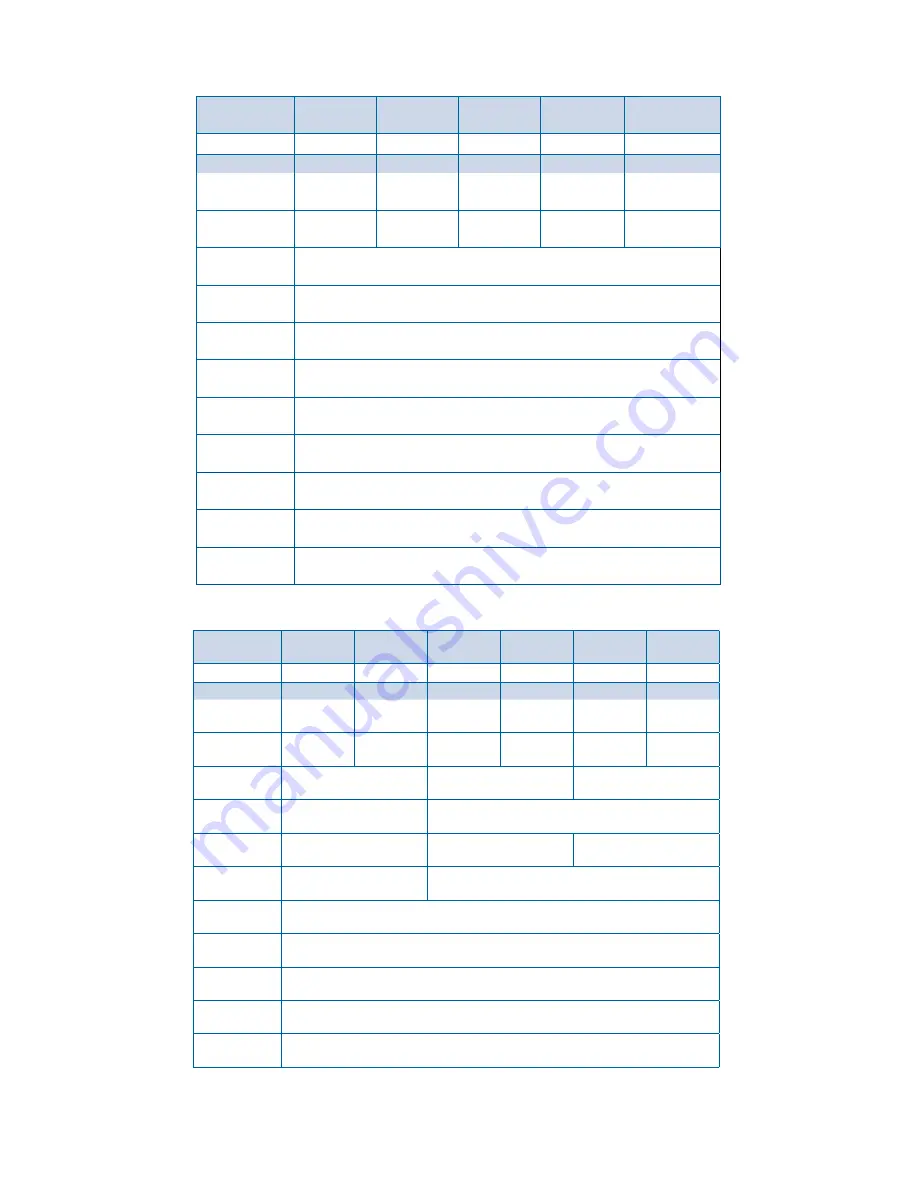
Part #110434_Rev33_01.04.12
In-Building Wireless Signal Booster Specifications (iDEN, PCS, EGSM & DCS)
Model/Part
Number
iDEN
# 804005
iDEN
# 804006
PCS
# 801306
PCS
# 801365
EGSM
#801506
DCS
#801606
Not for sale in
Canada
Not for sale in the
U.S. or Canada
Frequency
Uplink
806-821
MHz
806-821
MHz
1850-1910
MHz
1850-1910
MHz
880-915
MHz
1710-1755
MHz
Downlink
851-866
MHz
851-866
MHz
1930-1990
MHz
1930-1990
MHz
925-960
MHz
1805-1880
MHz
Gain
50 dB
60 dB
60 dB
65 dB
60dB
60dB
Max Output
3 watts
2 watts
3 watts
AGC Limit
(uplink)
+ 30 dBm
+30 dBm
Noise Figure
3-4 dB typical
4 dB typical
3 dB typical
Flatness
(uplink/downlink)
± 2.5 dB
± 4 dB
Isolation
(uplink/downlink)
> 90 dB
Power
Requirements
Input: 100-240 V AC 50/60 Hz 0.6 A / Output: 6 V DC 3 A
Connectors
N-Female 50 ohms
Dimensions
5.6 x 3.6 x 1.7 (inch) / 14.2 x 9.1 x 4.4 (cm)
Weight
1.5 lbs / 0.7 kg
In-Building Wireless Signal Booster Specifications (GSM & Cellular)
Model/Part
Number
Cellular
# 801105/801175
Cellular
# 801106
Cellular
#801108
Cellular
#801110
Cellular
#801165
Frequency
Uplink
824-849
MHz
824-849
MHz
824-835
MHz
835-849
MHz
824-849
MHz
Downlink
869-894
MHz
869-894
MHz
869-880
MHz
880-894
MHz
869-894
MHz
Gain
50 dB
60 dB
Channel A
60 dB
Channel B
60 dB
65 dB
Max Output
3 watts
AGC Limit
(uplink)
+ 30 dBm
Noise Figure
3-4 dB typical
Flatness
(uplink/downlink)
± 2.5 dB
Isolation
(uplink/downlink)
> 90 dB
Power
Requirements
Input: 100-240 V AC 50/60 Hz 0.6 A / Output: 6 V DC 3 A
Connectors
N-Female 50 ohms
Dimensions
5.6 x 3.6 x 1.7 (inch) / 14.2 x 9.1 x 4.4 (cm)
Weight
1.5 lbs / .7kg
The Manufacturer’s rated output power of this equipment is for single carrier operation. For situations when multiple carrier signals are present, the
rating would have to be reduced by 3.5 dB, especially where the output signal is re-radiated and can cause interference to adjacent band users.
This power reduction is to be by means of input power or gain reduction and not by an attenuator at the output of the device.


